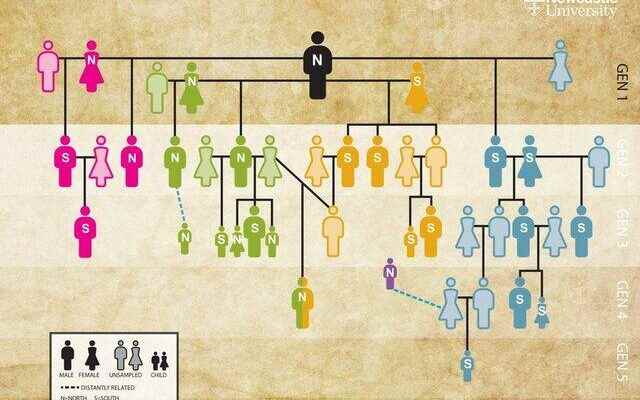Scientists in England discovered the world’s oldest family tree by examining human bones in a 5,700-year-old mausoleum.
DNA analysis of the remains found in the mausoleum in the Cotswolds city revealed that the people buried belonged to five different generations of the same family.
Most of the people in the Neolithic mausoleum are descended from four different women who had children from the same man.
These people were buried in different parts of the tomb, according to the matriarchal first generation to which they belonged.
According to the researchers, this discovery revealed that first-generation women had an important social position in the eyes of this community.
Located in the historic Hazleton North area of Gloucestershire, the mausoleum consists of two L-shaped parts, one end facing north and the other facing south.
In addition to the two women and their children, their own children dating back to the fifth generation are also buried in the southern part of the tomb.
Professor at Harvard Medical School, USA. “The other two women and their children were buried in the north-facing section, but the remains of some seem to have been taken to the south section at a later time. This may be because the north section collapsed after a while, making it now impossible to bury another family member,” explains David Reich. .
On the team leading the DNA research, Newcastle University’s Dr. According to Chris Fowler, the significance of this invention is great.
Fowler says that by examining the architectural structure in other Neolithic tombs, they can learn more about how family members were buried in these tombs.
The historical period to which the mausoleum belongs is also important. At the time the tomb was built, the British were introduced to farming by communities whose ancestors had migrated to Europe from Anatolia and the Aegean thousands of years ago.
By examining the remains in the mausoleums, researchers may also be able to get to know the family dynamics and cultures of these people who lived in the Stone Age more closely.
Researchers examining the family tomb say there are signs that the concept of “stepson” is also entering these family structures. It was noted that while the mothers of some men are in the grave, their biological fathers are not in the grave.
missing women
During excavations, researchers found the remains of two girls who died at an early age, but noticed that some women were not buried in the same grave.
Noting that “some women are missing”, Prof. Reich continued his words as follows:
“The birthrates of men and women were the same, so where these women were is a mystery. They are not in the next mausoleum, and they are missing among all this human community. Or were the dead people being cremated? We know that the dead are cremated in some communities. Did we find people?”
The mausoleums point to a family order in which polygamy was not limited to men. It is understood that women have children from more than one man, just as men have children from more than one woman.
It seems that different women who have children from the same man are generally not related to each other.
However, there are also instances where women have children from more than one closely related man.
Among the authors of the research report, geneticist Iñigo Olalde of the University of the Basque Country in Spain, with the help of the latest technologies and the well-preserved DNA in the mausoleum, were able to both discover the world’s oldest family tree and learn more about the social structures of ancient communities. He said they had a chance to own it.
